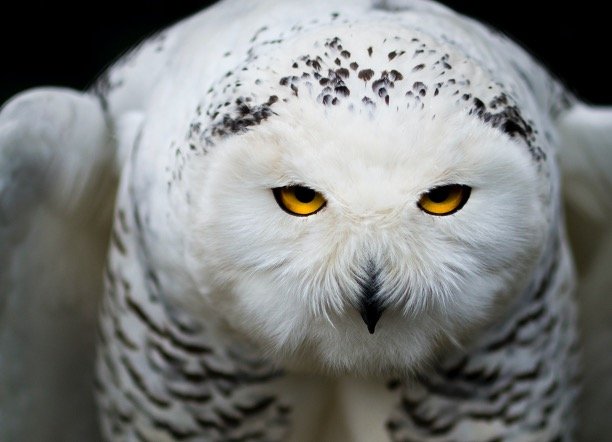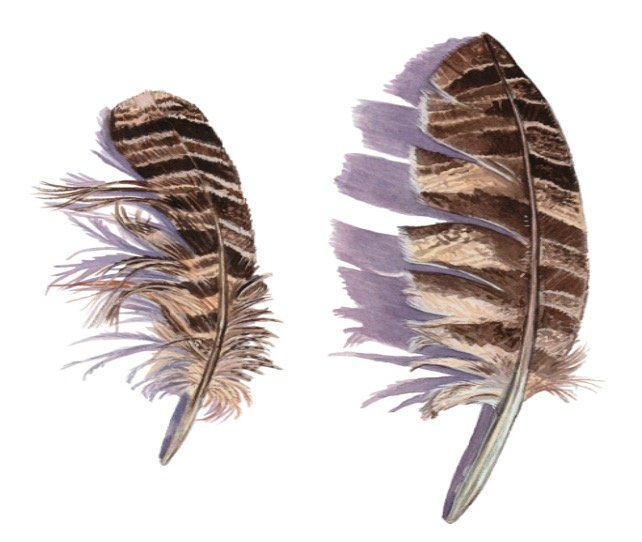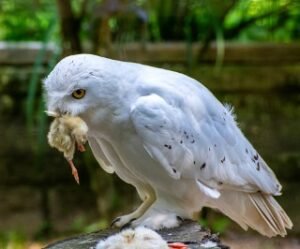
Owl Face
Owls are distinguished by their distinctive facial features, which have evolved to assist them in hunting prey and navigating their environment. Owl faces are distinguished by large, round eyes that are proportionate to their body size and enable them to see in low-light conditions.
They also have a flat, disc-shaped face that is covered in stiff feathers, which helps to funnel sound to their ears and improve their hearing. Owls have binocular vision due to the placement of the eyes on the front of the face, which allows them to judge distance accurately and make precise movements when hunting.

Their ears are also large and asymmetrically placed on the sides of their heads. This enables them to hear sounds coming from various directions and pinpoint the location of prey with remarkable accuracy.
Owls have hooked beaks that they use to tear apart prey before swallowing it whole. Their face feathers are also adapted to help them camouflage and blend in with their surroundings, making them less visible to potential predators or prey.

Owl Face Facts
1. Facial discs: Owls have round faces, also known as facial discs, which are made up of stiff feathers arranged in a circular pattern around their face. The facial discs aid in the transmission of sound to the owl’s ears, which are located at the disc’s edges, allowing them to locate prey accurately even in complete darkness.
2. Eyes: Owls’ eyes are large in proportion to their body size, allowing them to gather as much light as possible and see in low light conditions. Binocular vision is provided by the placement of the eyes on the front of the head, allowing them to judge distance accurately and make precise movements when hunting.
3. Ears: Owls have large, asymmetrical ears on the sides of their heads. Their ears’ size and positioning assist them in locating prey by hearing even the faintest of sounds. Their ears can detect subtle differences in sound arrival time and intensity, allowing them to pinpoint the exact location of prey with remarkable accuracy.
4. Camouflage: Owls’ facial discs help to camouflage their heads, making them less visible to potential predators or prey. Some owl species have evolved facial discs that mimic the patterns of tree bark or leaves, allowing them to blend in and avoid detection.
5. Head mobility: Owls can rotate their heads up to 270 degrees, allowing them to scan their surroundings without moving their bodies. Because of the structure of their neck bones and blood vessels, they can turn their heads without cutting off blood flow to the brain.
6. Bill: Owls have a hooked bill that they use to tear prey apart before swallowing it whole. The hooked shape of the bill aids in gripping and holding prey while tearing it apart.

Owl Skull
Owl skulls are distinguished by their large eye sockets located at the front of the skull and facing forward. This enables the owl to have binocular vision, which means it can see objects in three dimensions and judge distance accurately.

Owl skulls have a flattened face with a circular shape, in addition to their large eyes. This shape aids in the transmission of sound to the ears, which are asymmetrically positioned on the sides of the skull. The owl’s different ear sizes enable it to hear sounds from different directions and accurately locate prey even in complete darkness.
Size of Owl Face
The size of an owl’s face varies depending on the species. All owls, however, have a distinct facial structure that distinguishes them from other birds. Their faces have a flat, circular shape with a large beak and eyes.
The proportion of the eyes to the rest of the face is especially striking, as owls have large eyes that are fixed in their sockets, requiring them to move their entire heads to look around. The size of an owl’s face is generally proportional to its body size, with larger owls having larger faces.
The Eurasian Eagle-Owl, one of the world’s largest owl species, has a face that can be more than 5 inches in diameter, whereas the Elf Owl, one of the world’s smallest owl species, has a face that is less than 1 inch in diameter.

| Owl Species | Face Size |
| Elf Owl | Less than 1 inch |
| Northern Pygmy Owl | 1.5 – 2 inches |
| Eastern Screech Owl | 2 – 2.5 inches |
| Barn Owl | 3 – 3.5 inches |
| Great Horned Owl | 4 – 5 inches |
| Snowy Owl | 4.5 – 5 inches |
| Eurasian Eagle-Owl | Over 5 inches |
Which Owl Have Largest Face?
The Eurasian Eagle-Owl (Bubo bubo), which is one of the world’s largest owl species, has the largest face. Their facial disc can be over 5 inches in diameter, making it the largest of any owl species.
Their large facial disc aids in the transmission of sound to their ears, which are located at the disc’s edges, allowing them to accurately locate prey even in complete darkness.
Owl Eggs: Description, Images, and Fun Facts
Why Do All Owls Have Round Faces?
Owls have round faces, also known as facial discs, which help to amplify sound and improve hearing. The facial discs are made of stiff feathers arranged in a circular pattern around the owl’s face and act as a funnel to direct sound towards the bird’s ears.
The shape of the facial discs varies between owl species, with flatter discs appearing in some and more pronounced discs appearing in others.
In all cases, the shape of the facial disc aids in the capture and direction of sound towards the owl’s ears, which are located at the disc’s edges. This allows owls to find prey even in complete darkness, giving them an advantage over other predators who rely on sight or smell.
Why Are Owl Faces So Flat?
The facial disc functions as a parabolic dish, collecting and directing sound waves to the owl’s ears. This enables owls to locate prey with incredible precision, even in complete darkness. The flatness of the facial disc also contributes to the reduction of sound distortion caused by the owl’s wings in flight.
The flat facial disc reduces the amount of sound reflected back to the owl’s ears, improving their ability to hear and locate prey while in flight. Aside from its function in hearing, the flatness of the facial disc can aid in camouflaging the owl’s head and making it less visible to potential predators or prey.
Some owl species have evolved facial discs that mimic the patterns of tree bark or leaves, which helps them to blend in with their surroundings and avoid detection.








